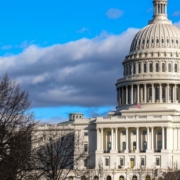Senate Bill Touted as Step Toward Streamlining Agencies
A report on a bill (S-666) now ready for Senate voting touts the measure as a step toward streamlining agencies by targeting redundant programs as the GAO has recommended for many years.
The “Identifying and Eliminating Wasteful Programs Act,” would require the CIO of each agency – under guidance to be issued by the OMB – to compile a list of “unnecessary, defunct, or duplicative programs; programs that could be performed more effectively by a different agency; and programs that could operate more effectively if consolidated with other programs,” says the report from the Homeland Security and Governmental Affairs Committee, which approved it.
The agency would have to include that list in its annual budget justification to Congress along with proposed legislative language to eliminate or consolidate them.
The report says the bill “presents a pathway for realizing these cost saving opportunities by assisting Congress, the Government Accountability Office, and other transparency and accountability actors, in the identification of unnecessary, defunct, or duplicative federal programs . . . Once these programs have been identified, Congress can craft legislation to rescind statutory authorization for these programs and realize any accompanying cost savings.”
It says the bill would build on “previous efforts to inventory federal programs to provide greater transparency and track costs and performance” including the Government Performance and Results Act Modernization Act, which requires agencies compile and present to Congress lists of duplicative or outdated reports they are required by law to submit.
Citation: FEDweek
Published: July 7, 2023





